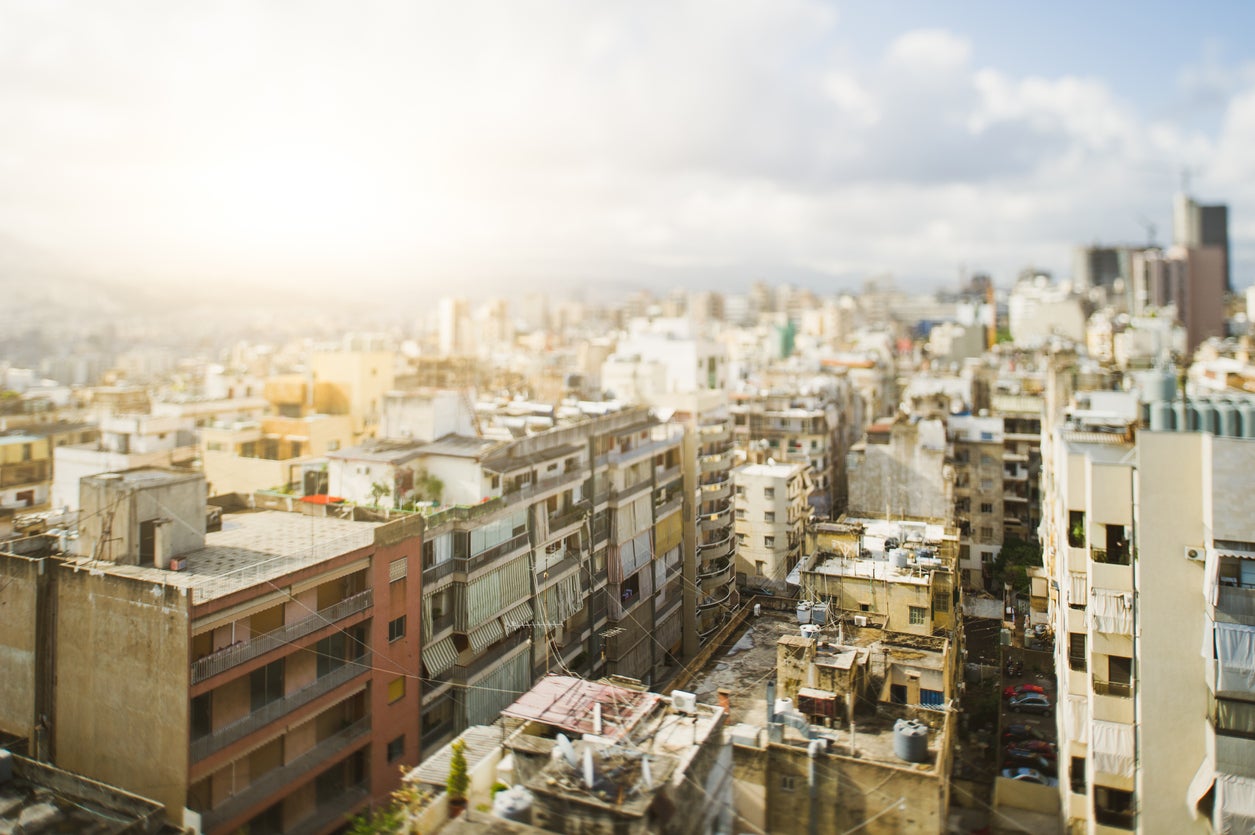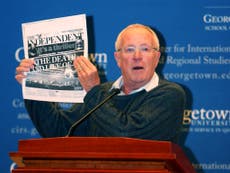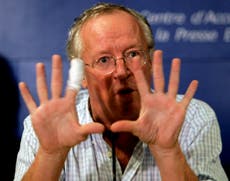12 May 2007: Our need for beauty in the midst of war
Amid suffering and destruction, Robert Fisk ruminates on the powerful instinct to reconnect with nature


Your support helps us to tell the story
From reproductive rights to climate change to Big Tech, The Independent is on the ground when the story is developing. Whether it's investigating the financials of Elon Musk's pro-Trump PAC or producing our latest documentary, 'The A Word', which shines a light on the American women fighting for reproductive rights, we know how important it is to parse out the facts from the messaging.
At such a critical moment in US history, we need reporters on the ground. Your donation allows us to keep sending journalists to speak to both sides of the story.
The Independent is trusted by Americans across the entire political spectrum. And unlike many other quality news outlets, we choose not to lock Americans out of our reporting and analysis with paywalls. We believe quality journalism should be available to everyone, paid for by those who can afford it.
Your support makes all the difference.During the 1975-90 civil war, a clammy joke regularly made the rounds on both sides of the Beirut frontline. God, the old saw went, created Lebanon as the most beautiful country on earth. But it looked so like Paradise that God became jealous – so He put the Lebanese there.
Yet the Lebanese, amid all their suffering and destruction, continued to care for their cedar trees and to plant vines and wheat and apple orchards and jasmine. Even on my own Beirut balcony, there was saxifrage and a single bougainvillea and a couple of miserable palm trees. I remember wanting to feel the warmth of plants but I cared for them in a half-hearted way because shells fell regularly around my apartment and I was never really sure if they – or I – would survive.
In Baghdad a couple of burning summers ago, I did the same, setting off through the dangerous streets to a market garden of fountains and pink flowers – run by an ex-Iraqi soldier who had seen the gassed and putrefying Kurdish bodies at Halabja – and bought three two-foot pot plants. These I ceremoniously put on the balcony of The Independent’s room at the Hamra Hotel in bleak memory of my Beirut flowers, the imaginary Mediterranean opposite, in reality occupied by a sinister, cracked apartment block. The plants consumed litres of dirty water each day, but eventually successive colleagues let them die, just as Baghdad was dying. And who could blame them? Flowers in war are a kind of beautiful obscenity, heaven amid disaster, an attempt to create Paradise in Hell.
Yet this month once more, we set off to the Beirut market garden called Exotica – I always nicknamed it Erotica – to renew the balcony flowers amid Lebanon’s latest and dangerous crisis. And yes, the old bougainvillea, no longer flowering, has been replanted. But three more – blazing with orange and scarlet and pink – have taken its place. There are now African violets and chrysanthemums and clostridia on the balcony. And why?
Well, by extraordinary coincidence, my latest mail package from The Independent contains the 26 April issue of The London Review of Books and as I sat reading it on our newly flowering balcony, there – incredibly – was Brian Dillon’s review of a book by Kenneth Helphand, Defiant Gardens: Making Gardens in Wartime. I shall, of course, buy it. The extracts were enticing enough, for Helphand had discovered that French and British troops in the trenches of the First World War – my father Bill’s war – also created miniature gardens.
In May 1915, The Illustrated London News actually published a full-page drawing entitled “Beauty Amid War”. As Dillon writes, “A sign that reads ‘Regent Street’ has been nailed to a blackened tree, and in the foreground, two soldiers tend a pair of perfectly rectangular beds of daffodils. A photograph taken the previous winter, in the Ypres salient, shows a soldier of the London Rifle Brigade posing in what is clearly intended … to be an approximation of a traditional English cottage garden.” As Dillon says, idealised gardens obviously did really exist, “an unlikely pelago of tidy plots that stretched across the front itself”.
And I began to wonder, reading this, if flowers did not soften war for us. Wasn’t “The Roses of Picardy” a wartime song? Don’t we still immortalise the blood-red poppies of Flanders Fields? Didn’t Gracie Fields mock the 1940 Blitz with “The Biggest Aspidistra in the World”? And for that matter, more gloomily, didn’t the British codename Arnhem “Operation Market Garden”?
Of course, Britons in wartime London cultivated kitchen gardens for food other than flowers and it’s probably true, as Dillon suggests, that the wartime garden is as much a symbol of desperation as a spiritually sustaining stretch of earth. Helphand’s book records how the Jews of the Warsaw Ghetto – long forbidden from public parks – could see from their windows “young girls with bouquets of lilac walking on the ‘Aryan’ part of the street”. Mary Berg recorded in the ghetto in 1941 how she could “even smell the tender fragrance of the opening buds. But there is no sign of spring in the ghetto.”
And for symbolism of America’s collapse in Iraq, what could be more profound than the story of US Warrant Officer Brook Turner, at an army base north of Baghdad, trimming a tiny lawn less than a metre across and a couple of metres long with a pair of scissors. Turner was acting out of nostalgia for the grass of his native Oregon. But it was an “artificially sustained territory”, threatened from within by a tenacious enemy of insurgent ants.
I was originally inspired to place plants on my own balcony by my landlord Mustafa who used to raise fig trees, olives and roses on the shell-smashed vacant lot next door. (Palestinians later buried rockets a few metres away.) Now a grim parking lot covers Mustafa’s little orchard, but he dutifully rescued most of his flowers and now they hang from 24 white boxes on the front railing of his home.
And after all, was it not the late Ryszard Kapuscinski, in his magnificent book on the Shah, who realised why Iranians made such beautiful carpets? They wove birds with splendidly coloured wings on to silken trees and rivers and blossom-covered branches. And they would throw their carpets to the ground, creating a garden in the desert.
An army of lovebirds now flocks past Mustafa’s garden and hides in the palm trees of the Corniche. But there was one persistent, ratty bird with no sense of music that would wake us all before dawn each morning. “Cheep – cheep – cheep – cheep – cheep,” it would go, monotonously, ruthlessly off key. Even the howl of shells would have been more musical, Wilfred Owen’s “choir” of artillery rounds. For months Mustafa would emerge in his pyjamas and dressing gown and storm on to the road with an ammunition pouch of stones.
These he would fling into the trees in an attempt to hit the wretched bird which prevented our sleep. He always missed and in the end, of course, he simply gave up, and now the same bird’s descendants sound the same ghastly chorus at 4.30am. There is nothing we can do. Nature has won over humanity.
Following the death of Robert Fisk on 30 October 2020, The Independent has reproduced some of his best dispatches from 30 years of reporting



Join our commenting forum
Join thought-provoking conversations, follow other Independent readers and see their replies
Comments